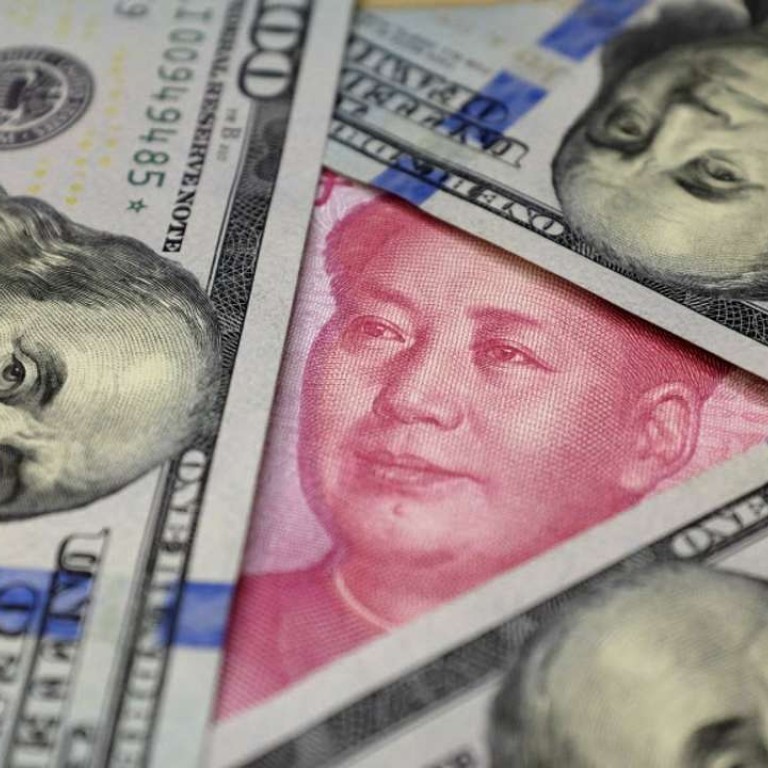
China’s forex reserves rise for second month in a row in April to US$3.22 trillion
Increase of US$7.1 billion beats market forecast of a drop, pointing to easing in capital outflows, figures released by People’s Bank of China show
China’s foreign exchange reserves rose, albeit marginally, for a second consecutive month in April, indicating easing in capital outflows, according to data released by the People’s Bank of China on Saturday.
The US$7.1 billion rise beat the market forecast of a drop and took outstanding forex reserves to US$3.22 trillion at the end of last month. In March, the reserves rose US$10.2 billion, ending a five-month decline.
The increase came after forex reserves began falling dramatically late last year asthe central bank intervened in the market– both onshore and offshore – to defend the yuan and stem capital outflows amid a dim outlook for the country’s growth and currency.
The State Administration of Foreign Exchange said last month that the spread of offshore and onshore yuan/US dollar rates had narrowed and the pressure of capital outflows eased compared with the start of this year.
The easing was also partly the result of a delay in rate hikes by the US Federal Reserve. But the uncertain timing of the second rate increase – after the first in the middle of December – remains a challenge and may put China’s capital flows and yuan’s exchange rate at risk.
In the United States, indicators such as orders for durable goods and non-farm job creation are weak, which will addpressure on the dollar to weaken, analysts said. The US dollar index, measuring the greenback against a basket of other major currencies, dropped 1.67 per cent last month.
“The central bank aims to keep a stable yuan against the US dollar to stabilise capital movement, while it is helping exports by correcting an overvalued yuan against a basket of currencies,” a domestic broker at Minsheng Securities said in a research note.
China is slated to release monthly economic data including trade, inflation and production from Sunday, offering fresh signals of the sustainability of its economic growth.
The first-quarter GDP growth of 6.7 per cent is believed to have been built on old-fashioned growth models such as property and government-backed investment at the cost of tougher but much-needed reforms.

However, cumulative default risks in China’s bond market may test investors’ confidence on the resilience of the world’s second-largest economy and its financial markets.
The central bank has started to publish forex reserve data measured by Special Drawing Rights (SDR), a move to cement the presence of the accounting unit of the International Monetary Fund and an effort to reduce the valuation volatility induced by big changes in major currencies.
In terms of SDR, the country’s foreign exchange reserves were 2.27 trillion at the end of last month, down from 2.28 trillion at the end of March.
The yuan will be officially included as a component currency of the SDR later this year.

